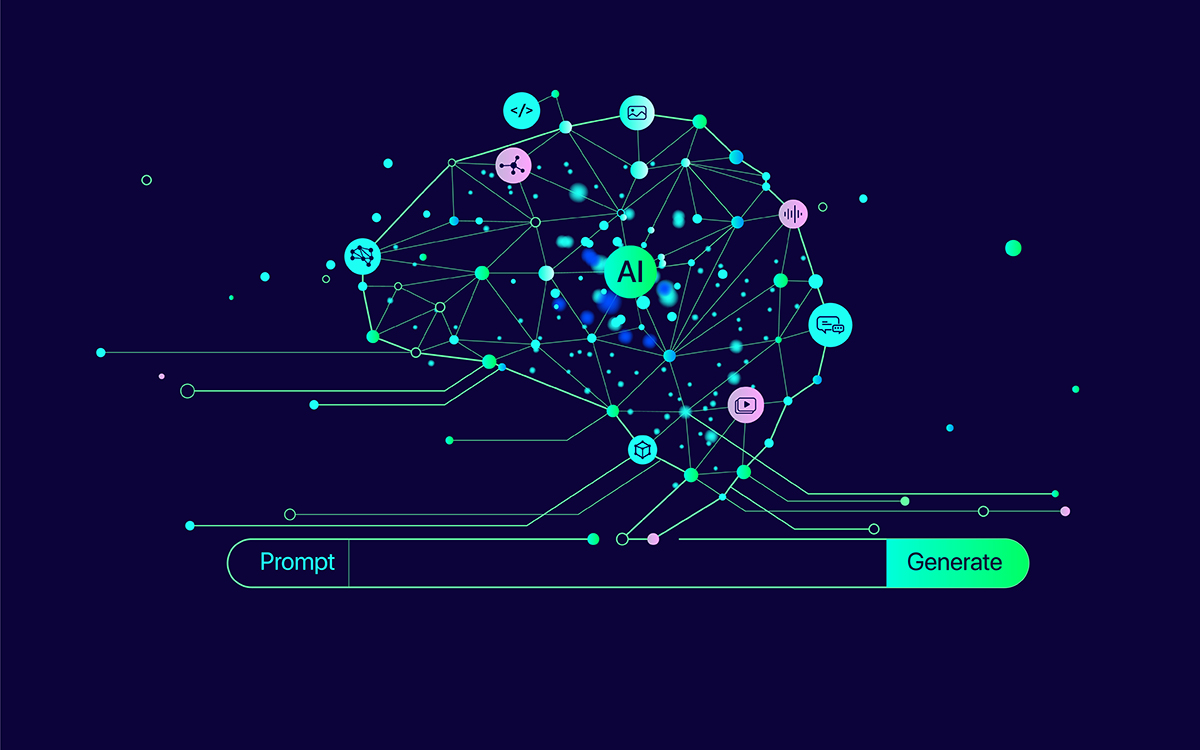
Cost Optimisation for AWS SageMaker in GenAI Real-Time Inference Endpoints

The demand for Generative AI (GenAI) technologies is experiencing a significant surge as enterprises across various sectors are actively exploring its capabilities through diverse applications. This exploration entails the deployment of multiple GenAI Large Language Models (LLMs) to evaluate their performance. However, a considerable challenge presents itself in the form of cost optimization. The real-time SageMaker endpoints, essential for hosting these models, generate expenses based on the instances utilized. The financial impact of sustaining these endpoints—particularly during prolonged periods of inactivity—can rapidly escalate, posing a substantial strain on resources.
Serverless solutions effectively tackle the cost challenge by offering a deployment and scaling solution for machine learning models without the necessity of managing the underlying infrastructure. This serverless option is particularly suited for applications that experience variable traffic patterns; however, their current limitation to CPU-based models renders them unsuitable for most GenAI use cases requiring GPU acceleration and real-time response. A 2022 report by Gartner predicts that by 2025, 80% of enterprise AI workloads will involve GPUs, emphasizing the need for solutions beyond CPU-bound options.
Challenges of Traditional SageMaker Endpoints:
Idle Endpoint costs, and Limited Serverless options pose significant challenges within the current infrastructure framework. Traditional SageMaker endpoints are designed to incur costs continually, even when not in use, which can lead to unnecessary expenditure and inflated financial statements. This model is particularly inefficient in scenarios where AI operations are irregular or intermittent, as it can have a significant impact on budgets and impede efforts towards achieving cost-efficiency. Teams are often in a position where they are financing resources that are not in active operation, diverting potential financial investment from other critical areas.
Also Read: AI for Predictive Analytics: Everything You Need to Know
Furthermore, the existing serverless options come with their own set of limitations, most notably the lack of GPU support, which is a critical component for the enhanced performance of many GenAI models. The absence of GPU acceleration hampers not just the speed of inference but can also affect the precision and overall effectiveness of AI applications that necessitate immediate response times.
This situation compels organizations to continue using traditional endpoints, thus foregoing the inherent advantages of serverless computing, such as ease of management and scalability, in favor of GPU capabilities. This decision introduces a layer of complexity in resource administration and brings about further financial burdens and operational intricacies.
The solution: SageMaker Endpoints on Demand
Leveraging AWS services to dynamically provision SageMaker endpoints as needed and to decommission them when idle can build an effective balance, ensuring cost-effectiveness through optimized resource utilization while still delivering the capabilities required for real-time inference and GPU support. This approach is supported by a 2023 Forrester study, which highlighted that organizations employing SageMaker for AI model
development have achieved an average cost saving of 30%, attributable to the enhanced efficiency in resource usage. This solution works by:
- API Gateway Integration with Lambda: The system engages with an API Gateway endpoint, which is augmented by a Lambda function. This function is tasked with capturing the application identifier and the specified LLM model requirements.
- Endpoint Validation and Verification: Upon receipt of a request, the API Gateway proceeds to authenticate the request and conducts a search for any pre-configured endpoints that align with the provided application and model designations. Should a match be discovered, the respective endpoint’s ARN and designation are promptly supplied for utilization.
- Batch-Driven On-Demand Provisioning: In instances where the required LLM model is not presently active, the protocol initiates a batch operation to establish the requisite endpoint. This process is equally responsible for the managed termination of the endpoint as necessitated.
- Provisioning Status Monitoring: Throughout the provisioning trajectory of the endpoint, the application methodically performs status inquiries via the API. Following the successful establishment, the application is furnished with the endpoint’s specifics for deployment.
- Systematic Endpoint Termination: An orchestrated routine within EventBridge initiates a “Check usage” function in Lambda at 15-minute intervals. This function meticulously assesses the usage metrics for the dynamically provisioned endpoints. If no activity is recorded over the last hour, the system proceeds to retract the endpoint without manual intervention.
Also Read: How Software Testing Is Evolving by Leveraging AI
This approach offers significant cost savings by eliminating idle endpoint costs. However, it comes with certain benefits and trade-offs:
Benefits:
- Enhanced Cost Efficiency: Our solution’s automated removal of unutilized resources ensures cost optimization by eliminating expenses associated with inactive instances. This approach to cost management can translate into substantial long-term financial benefits, enabling more strategic allocation of your fiscal resources to pivotal areas of your enterprise.
- GPU-Powered Performance: The incorporation of GPU-accelerated instances is crucial for enhancing the capabilities of Generative AI models, enabling faster processing speed and more complex computational tasks. This boost is particularly vital for operations involving image creation, advanced language processing, and voice synthesis, where the essence of performance lies in swiftness and efficiency.
- Real-Time Inference: Maintaining low latency for real-time inference ensures a seamless user experience, particularly in applications where timely responses are critical. Whether it’s providing instant recommendations in an e-commerce platform or responding to customer queries in a chatbot, minimizing latency is essential for user satisfaction.
- Scalability: Dynamically provisioning resources allows you to scale your AI infrastructure based on fluctuating demands, ensuring optimal performance during peak usage periods without overprovisioning during quieter times. This flexibility is crucial for accommodating sudden spikes in workload and adjusting resource allocation in real time.
Also Read: 5 Success Factors for AI Projects
Trade-offs:
- Application Awareness: While dynamic endpoint provisioning offers flexibility and cost savings, applications need to be designed with an awareness of this dynamic nature. They should be able to handle on-demand endpoints and potential delays in provisioning without impacting user experience or application functionality.
- Model Support: Integrating new LLM models into the provisioning process allows for seamless deployment and removal of endpoints as needed. However, this requires ongoing maintenance and updates to the batch job responsible for provisioning and tearing down endpoints.
Example: Enhancing a GenAI-Powered Content Generator’s Efficiency
Imagine a company developing a GenAI-powered content generator that experiments with various LLM models for different content types. Using on-demand SageMaker endpoints, they can:
- Minimize Idle Costs: Deploying endpoints exclusively for specific LLM models when required ensures they’re not paying for unused resources during downtimes. This strategic approach effectively reduces unnecessary expenses associated with maintaining idle instances.
- Dynamic Scaling: With the ability to automatically scale endpoints in response to real-time usage patterns, the company optimizes resource allocation. Scaling up during peak demands and scaling down during quieter periods ensures optimal performance without overspending on infrastructure.
- Streamlined Management: By entrusting AWS services for endpoint provisioning and removal, the company significantly reduces infrastructure management overhead. This streamlined approach allows them to focus their efforts on refining content generation algorithms rather than grappling with the complexities of resource management.
Conclusion:
While on-demand SageMaker endpoints have limitations, their potential for cost optimization in non-production environments is undeniable. This approach unlocks the door to cost-effective exploration of diverse GenAI models and usage patterns, paving the way for wider adoption of this transformative technology.
However, the future of GenAI holds even greater promise. As serverless options evolve and GPU support becomes more readily available, the trade-offs associated with on-demand endpoints will diminish. This will create a future where organizations can seamlessly leverage the power of GenAI without sacrificing cost efficiency.
Apexon’s comprehensive suite of services is designed to empower organizations to fully harness the potential of generative AI technology. From foundational model development to tailored solutions, we offer expertise across infrastructure management, technical optimization, and data security. Our approach includes fine-tuning large language models (LLMs) for specific applications, ensuring efficient resource management and system security through advanced methodologies like intrusion detection and threat prediction. Our seamless integration of LLMs into existing systems, coupled with thorough testing and ongoing monitoring, ensures smooth operation and continual improvement. We also provide support for regulatory compliance, user training, and bias mitigation, fostering ethical and transparent use of LLM-powered systems. We ensure regulatory compliance, provide user training and support, and actively monitor and mitigate biases to promote ethical and fair use of generative AI systems.
Also read: Innovating at Scale: How We Leveraged AWS Elastic Beanstalk for Agile Development
Also read: Driving Innovation: How Cloud and Generative AI Empower Each Other
Also read: Mastering Serverless Data Analytics with AWS Glue and Amazon Athena




